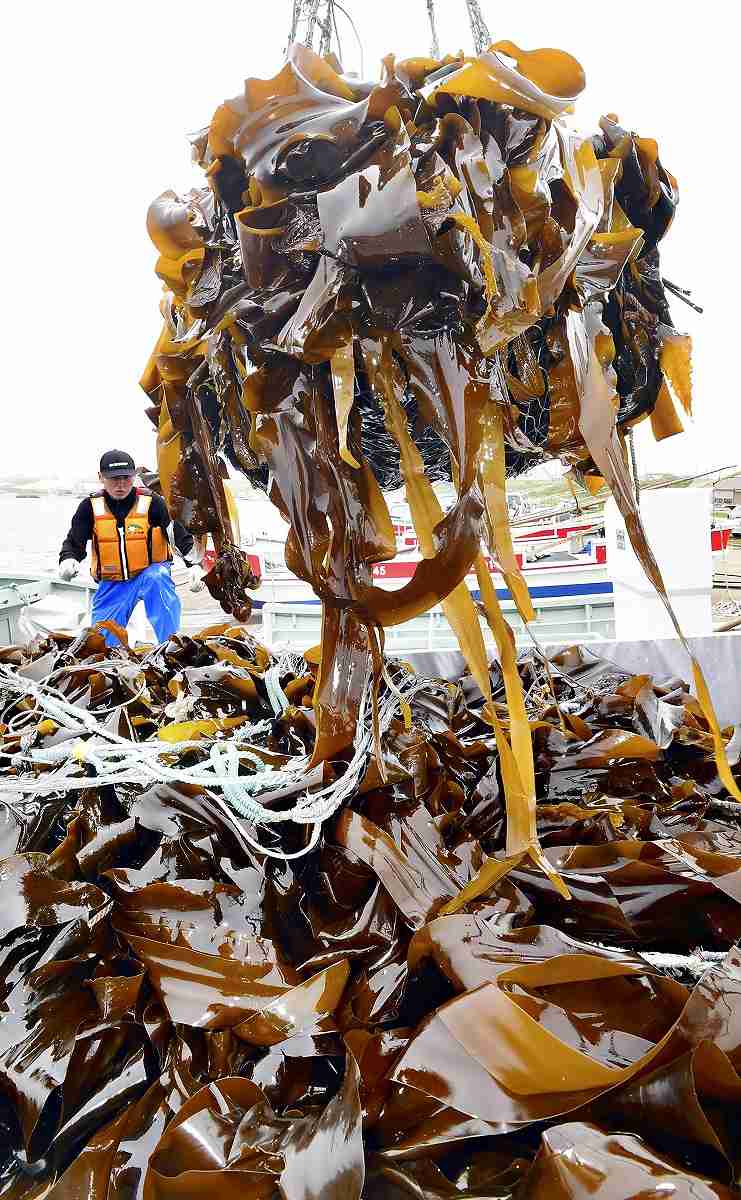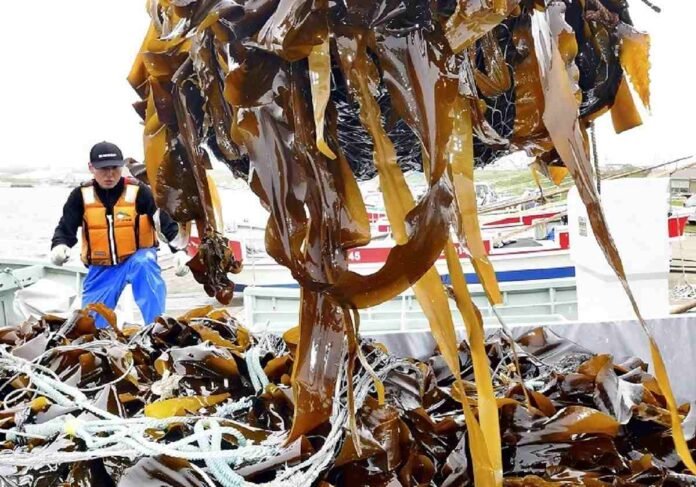On June 15, fishing boats set out to harvest kombu near Nemuro, Hokkaido.
12:01 JST, July 3, 2024
NEMURO, Hokkaido — More than 190 fishing boats gathered at Cape Nosappu in Nemuro, Hokkaido, on June 15 to harvest kombu, two weeks after the official opening of the kombu harvest season.
The ships set out at 6am to collect kombu in the waters off Kaigara Island, one of the Habomai Islands. The official opening of this year’s season was on 1 June, but the harvest was delayed due to poor growth of kombu caused by the impact of drifting ice and rising sea temperatures.

Kombu arrives at a port in Nemuro, Hokkaido on June 15.
The fishing boats formed a straight line from the headland and set off together to the sound of fireworks and sirens, heading for a lighthouse on Kaigara Island, 3.7 kilometres away. Once there, the fishermen would dip fishing gear called kagizao (a pole with a hook on one end) into the water to collect saomae-kombu, which they would twist around the poles.
“The volume [of landings] may be the smallest ever, but the quality of the kombu is quite good,” said Toshimi Honda, 70, who has been harvesting kombu for more than 50 years. “I want to continue fishing [kombu] in one way or another.”
As relations between Japan and Russia deteriorated, Russia flew its flag over the lighthouse on Kaigara Island last year, as if to openly claim that the island was effectively under Russian control. With Russian patrol ships also monitoring the area this year, the kombu harvest was carried out in a tense atmosphere.
Japan and Russia have agreed that the amount of brown algae, including kombu, that Japan will collect this year should be 3,360 tons, for which Japan will pay Russia ¥80.37 million in collection fees. Last year, Japan paid Russia ¥82.54 million for collecting 3,451 tons of brown algae.



